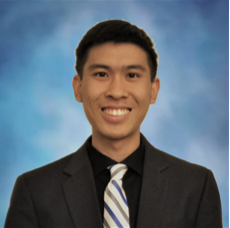Path Selection Millimeter-Wave MIMO Under Limited Spatial Transmitter Capacity
Date: Thu, July 28, 2022
Time: 2:30pm - 3:30pm
Location: Holmes Hall 389 or Zoom
Speaker: Willy Chang, candidate for MSEE, advisor: Dr. Yao Zheng
Abstract
Wireless sensing and communication is heading into a new era with the advent of fifth generation (5G) capabilities. Although these higher frequency bands are expected to increase throughput and reduce latency to meet increasing mobile user demands, they face significant challenges due to changes in physical characteristics that require different solutions compared to existing methods. One such method is multiple-input, multiple-output (MIMO), a way to increase the capacity of a communication link by exploiting multipaths that exist in the environment. While this rich scattering environment provides the diversity required, at mm-Wave, such paths are non-existent as a consequence of the rapid attenuation shorter wavelengths experience and blockages that prevent the signal from propagating through them. To support MIMO operations, existing research opt to focus on line-of-sight (LoS) MIMO to ensure an orthogonal channel matrix. However, these optimizations are unfeasible over longer distances and limited separation distances for both the transmitter and the receiver. We investigate the non-LoS (NLoS) channels via reflectors as an alternative to a LoS link. Several preliminary ideal simulations of the channel matrix under 2x2 and 3x3 MIMO were implemented to identify key areas of interest for antenna elements to guide their transmitted signal in order to maximize the channel capacity. We also conducted real-world experiments at 28 GHz to demonstrate that the measured channels are in good agreement with the theory for NLoS MIMO. We also suggest and analyze the time complexities of path selection algorithms that leverage the given information to achieve the best possible throughput while minimizing overhead.
Biography

Willy Chang is an MS candidate in Electrical Engineering at the University of Hawai`i at Mānoa. He obtained his B.S. in Computer Engineering at the University of Hawai`i at Mānoa. His current research focus is integrated sensing and communication using mm-Wave wireless signals, while his main research interests include machine learning, wireless communication, and wireless sensing.